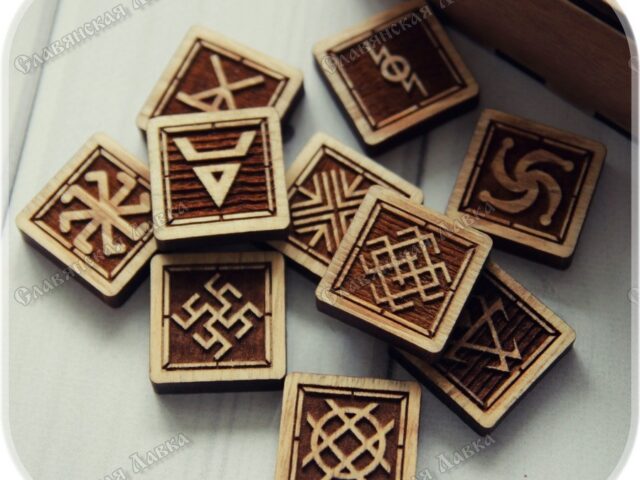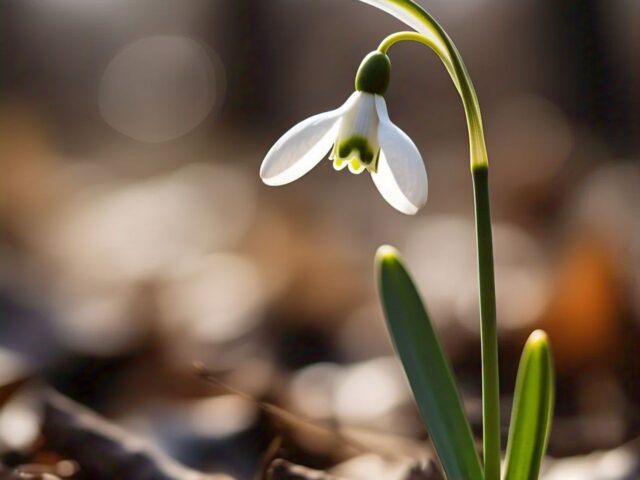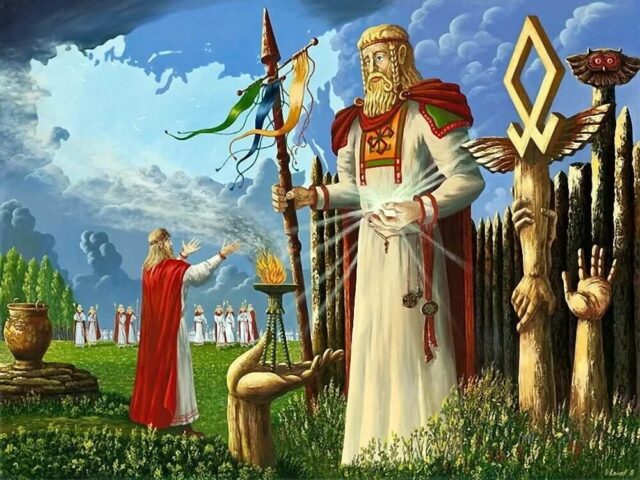Mokosh, the ancient Slavic goddess of fate, is revered for her power to weave the threads of life. According to legend, Mokosh spins white threads for those destined for happiness and black threads for those facing adversity. The fate of humanity hangs in the balance of these delicate threads. Honoring Mokosh: 12 Fridays of the Year Twelve Fridays throughout the year are dedicated to Mokosh, with each Friday holding special significance. During these days, women are encouraged to engage in protective handicrafts, such as: Symbolism of Mokosh The symbol of Mokosh, known as Rodovik, represents …
 Blog
BlogMokosh: The Slavic Goddess of Fate
 Blog
BlogThe Mysteries of Slavic Magic: Understanding the Power of Slavic Runes – Rod’s Rez
From ancient times, Slavs have communicated with the gods through symbols, protecting their homes with intricate carvings, wishing good fortune and happiness through embroidery, and healing by drawing signs on the body. Rod’s Rez, or Rod’s Carvings, are traditional symbols used to connect with the Slavic gods. When applied to any surface, they convey desires to the Higher Powers. Have you ever wondered about the place where you receive answers from the gods and goddesses? We call this sacred space the Vedic Field, a realm that exists beyond our physical world. While we can’t pinpoint …
 Blog
BlogThe Mysteries of Veles: Birth, Destiny, and Patronage
Veles, the powerful Slavic god, has been the subject of numerous legends and tales. His existence is well-known, even among those who are not deeply familiar with Slavic culture. Are you ready to delve into the sacred and uncover some of the mysteries surrounding Veles? Then let’s begin! Veles Birth The origins of Veles are not straightforward. Some sources suggest that he is the son of Zemuna, the Cow, who was herself created by Rod, the supreme god. However, the identity of Veles’ father is unclear, with some accounts attributing it to Rod and others …
 Blog
BlogThe Snowdrop: A Symbol of Strong Goal-Setting and Female Empowerment
In ancient Russian culture, the snowdrop flower was revered as a powerful symbol of strong motivation, goal-setting, and female initiation. This delicate, white bloom was often depicted in traditional Russian art, including lacquer miniatures, lubok prints, and 18th-century shawls. The Snowdrop’s Symbolism The snowdrop represented hope, renewal, and consolation, reminding women of the importance of self-discovery and determination. In Russian folklore, the snowdrop was often associated with the goddess Lelia, who embodied female power and fertility. Female Initiation and Empowerment In traditional Russian culture, the snowdrop was linked to the rite of passage for young women, …
 Blog
BlogAncient Slavic traditions in our daily life
Slavic traditions are deeply rooted in the daily lives of the Slavic tribes, where every action was performed consciously in a meditative state, manifesting images from the mind into reality. Incorporating these traditions into our modern lives can bring a sense of connection and gratitude to our daily routines. For the Slavs, tradition was an integral part of life. Upon waking up, a Slavic individual would express gratitude and bow towards the sun, acknowledging the new day. Different regions honored various sun gods like Jarilo, Dazdbog, Hors, and Svetovit, reflecting the diversity of beliefs within …